captain nemo submarine yacht feasible option
Thursday, July 9, 2020
Tuesday, May 14, 2019
Solving the ocean colonization technology bottleneck
| ocean colonization technology | solve the ocean colonization technology bottleneck | nautilusmaker® |
Saturday, December 22, 2018
Friday, November 30, 2018
Ocean Colonization Technology • Advanced Cement Composite Structures
Light dome shell architecture | floating city | ocean colonization | @nautilusmaker | New-VENICE™ | New-Atlantis™ |
Light cement composite materials can be built to any shape | freeforming methods |
Monday, March 2, 2015
Get a foothold in ocean colonization:
The Captain Nemo Lifestyle:
Why oceanic business is the next big thing to come:
Ocean sphere fish farming:
Ocean colonization gallery:
Big things have small beginnings ocean colonization transition, potential:
Sustainability on Planet Earth only the oceans can safe us:
Free spirited oceanic lifestyle global mobility:
Monday, June 17, 2013
ocean colonization exploring oceanic freedom

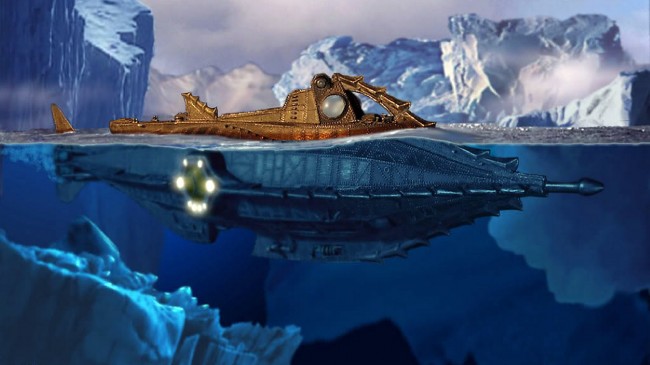

Let me propose the "captain nemo float out" it is basicly building a "better yacht" that can stay in open ocean for long periods of time.
Yachts can not stay in open ocean for long periods of time as the wave action makes staying there quite uncomfortable.
Yachts are also built from materials that impose "light building" as principal design feature. This goes bad with basic seasteading needs like big tank volumes and store of big amounts of goods like food, spare parts, tools, fuel, water and similar.
In general a yacht is built for living in a marina and make short trips of no more than a few days crossing open water in favorable weather conditions.
We propose (and already tested) a vehicle that is the technical equivlent of a whale. A very heavy almost completly submerged body wandering worldwide at a speed of 7 knots with incredible low energy needs, capeable to live on resouces and opportunities that come up seasonally at thousands of miles distance.
This vehicle would be about "apartment size" hold a adequate living space for a single family be equally comfortable in harbor or at open sea, avoiding wave movements by cruising most of the time in snorkel mode. It would provide "leave coffee cup on the table comfort" even in the worst imaginable sea conditions.
It would be the "workhorse" of a new generation of ocean explorers and settlers who engage in activities like open water pod fishfarming, tuna rearing, wreck salvage, scuba tourism, mineral explotation, scientific data collection, tourism and similar.
This workhorse would be almost completly independent of infrastructure.
The captain nemo float out / captain nemo yacht, liveaboard / captain nemo submarine yacht / captain nemo yacht / Captain nemo nautilus, submarine / The captain nemo float out - seasteading / captain nemo lifestyle mobilis in mobile / virgin oceanic, captain nemo, business /

It would allow to have a lifestyle that is somewhere halfway between a yachtie, the moken, and captain nemo. It would allow to paricipate in existing yachting, use existing harbor and boating infrastructure when available. But on the long run it would work best as mobile complement of oceanic cities as proposed by seasteading.

Thread about the captain nemo float out at seasteading.org here
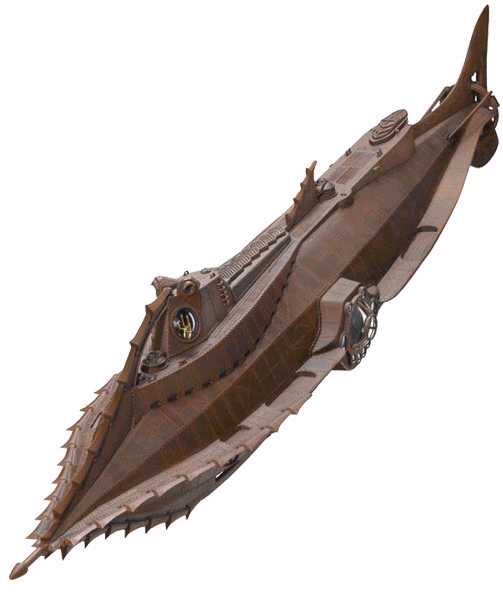 .
. 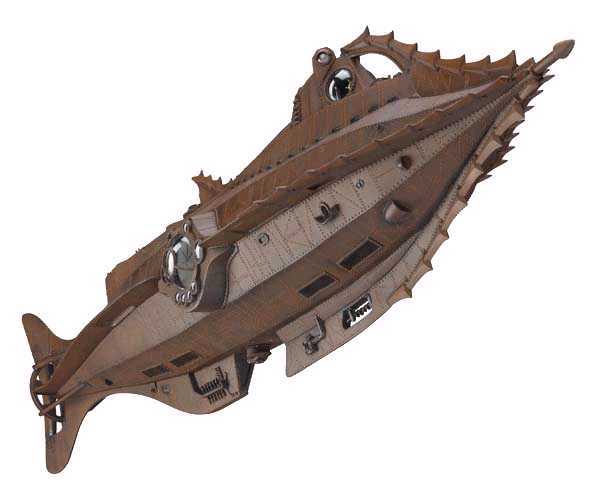
 .
.  .
.


No long distance surface swimming animal exists because this is not energy efficient. Even whales which need the surface for breathing (because they started as a surface animal similar to a nutria -ambulocetus-) swim now below surface - why ? because they cruise up to 12,000 miles each year and nature shapes all animals to be energy efficient. Here we are - if you are looking for a model for a energy efficient ocean crossing submarine yacht take this. A 200 ton whale with a length of 30m (cut some of the tail section for hydrodynamic efficient length - take some 25m) can come up to a speed of 30 knots and has been measured at those speeds. Biologists and Physiologists estimate its maximum power output at 400 horsepower. Whales are mammals so their energy physiology is similar to other mammals. Which means there is a big gap between the energy output you can get from the organism in a emergency situation for a few minutes of fast swim and the energy output you can get 24 hours a day. The most educated guess on that is a factor 10 you can run very fast for 1 minute but if you wander 24 hours a day you have to do it at a slower rithm. This means what you have on a whale tail 24 hours a day during wandering is maybe 40 horsepower possibly less. If you take into account that whales do not feed which means do not re-fuel 6-8 months during wandering - how is this possible ? - only if they use VERY VERY little energy for swimming over VERY VERY long distances. What is the efficient speed range ? Smaller whales cruise at some 3 knots bigger whales at up to 6 knots. Taking a stream speed of 3 knots in your favor as ben franklin did in its 30 day Golf Stream drift dive - you could have a whale economic ocean crossing at 9knots over ground in a submarine yacht - not bad ! Having this in mind i took my prototype concrete submarine to water back in 1996 it was whale shaped had 20 tons like a small whale and my most important question was not top speed with a big engine - this is quite clear anyhow - my question was the limbo - how low can you go... so what i did first was installing a ridiculously small electric engine of 200W into the sub and pushed the switch. - What happened? First nothing then after a couple of seconds the hull took up speed and kept taking up speed until it reached a speed of what would be in the range of a whale efficient cruising speed - some 3 knots. So i never came to the point to install the big combustion engine i had in mind in first place - it was not necessary. I later put a small generator in to reload the small battery pack and extend the range - that was all. In all my submarine yachting years i never saw a situation i would have had a need for a bigger engine. This ridiculously small engine pushed me trough storms had no problem to get nose into the wind... So i am well aware what engine size is recommended for surface yachts - BUT - based on my own experience i would be concerned that such a engine would have a short life in a yacht submarine yacht because it has to run all the time in under load during cruising . I also have no problem if somebody wants a 400hp engine in a 200 ton submarine yacht to run all the time at whale emergency speed of 30 knots - you could water ski behind it...
My personal preference is doing it like those gentle giants - cruise oceans energy efficient at moderate speed.
When you plan an engine for a submarine yacht you should forget anything that is recommended for surface yachts and come back to the basics. Fortunately there exists a fine model made by mother nature that has about the size of a submarine yacht and travels long distance as a submarine yacht is supposed to do - Whales! A streamlined body such as a whale can travel over long distances with incredibly low energy use. Studies suggest that a whale uses 5 times less energy for swimming under surface than swimming on surface where additional drag from wave resistance comes up. A graywhale of 18 tons displacement has 3000 kg (14 kg of fuel/day) to travel 20.000km (95km/day) in this journey he has about 589g/hour of fuel available for life support and locomotion. To simulate the locomotion model of gray whale a submarine yacht of the size of my prototype (20tons) is well equipped with a diesel of 1-3 horsepower. This fits well with my own field data that suggest that a small electric engine of just 200W can move a submarine yacht hull of 20 tons under all weather conditions. Such a submarine yacht is able to go 95km per day with 14kg fuel use per day - the problem is you might not find a diesel small enough for this.
....right whales are slow swimmers, rarely exceeding 5 knots, with an average speed of only 2 knots. Gray whales are also not too fast, clocking a maximum speed of only 6.5 knots. Humpback whales do about 5 knots on average, but can put on bursts of 9-10 knots. Sperm whales are much faster, doing about 10 knots on average, and able to accelerate up to 20 knots or so if pushed, though only able to maintain this speed for a short period. Speeds of 14 -18 knots have been reported for the minke whale. The sei whale appears to be the fastest of the lot, able to achieve a sprint of about 32 knots, although again for only a short stretch. Some dolphin species can also go this fast, and are generally a lot faster than whales on average.
Energy efficency
hydrodynamic cost of swimming for a graywhale
muscle and digestive efficiencies of 25% (Gosline 1993) and 80% (Thomson and Martin 1986)
Models developed by (Bose and Lien 1989) for a fin whale
model for a typical gray whale (Sumich 1983) estimates the daily requirements for gray whale locomotion come close to 60 Mcal/day.
Gray whale if swimming near to surface encounter wave drag which can increase total drag by a factor of five (Hertel 1966)
It makes sense for whales to travel at depth greater than 3 times their body depth (Sumich 1983)
Metabolic rate from oxygen consumption Studies:
(sumich 1983, Wuersig et a. 1986, Wahrenbrock et.al.1974, Highsmith and Coyle 1992)
hydrodynamic models:
Bose and Lien 1989, Hui 1987,
------------------------------------------------------
Bose N, Lien J (1989) Propulsion of a fin whale (Balaenoperta physalus): Why de fin whale is a fast swimmer. Proc R Soc Lond B 237:175-200
--------------------------------------------------------
Hertel H (1966) Structure, form and movement. Reinhold Publishing Corporation, New York.
--------------------------------------------------------
Hui CA (1987) Power and speed of swimming dolphins. J Mamm 68: 126-132
--------------------------------------------------------
Kleiber M (1975) The fire of life: An introduction to animal energetics. Robert E Krieger Publ Co., Huntington, New York.
--------------------------------------------------------
Pike GC (1962) Migration and feeding of the gray whale (Eschrichtius robustus). J Fish Res Bd Canada 19: 815-838
--------------------------------------------------------
Sumich Jl (1983) Swimming velocities, breathing patterns, and estimated costs of locomotion in migrating gray whales, Eschrichtius robustus. Can J Zool 61:647-652
--------------------------------------------------------
Wahrenbrock EA, Marushak GF, Elsner R, Kenney DW(1974) Respiration and metabolism in two baleen whale calves. Mar Fish Rev 36:3-9
--------------------------------------------------------
Blix, A.S. and Folkow, L.P.(1995) Daily energy expenditure in free living minke whales. Acta physiol. scand. 153, 61-66
--------------------------------------------------------
Hui (1987) estimated that dolphins energy bursts represent a 166-fold increase of the metabolism over resting rates.
Migrating gray whales have a minimum CT (cost of transportation) that occurs at the mean velocity of 2.0m/s (Sumich, 1983). The stored engery resevers allow a migration of 15.000-20.000km during which the whales fast.
Cost of locomotion estimated, based on Lockyer(1981) and an average swimming speed of 6.3km/h for gray whales (Perryman et al. 1999)
Total blubbermass used in migration in a 18000kg whale is 3000 kg available for six to seven months without feeding - while migrating 20.000 km
energy by respiration...
The estimated O2 consumption of about 150 l.min(-1) is in line with the general allometric regression for mammals and corresponds to an energetic expenditure of 85-95 kJ.kg(-1).day(-1).
( BLIX AS, FOLKOW LP. Acta Physiol Scand 1995;153(1):61-6.) Mink Whales
...We found that cost of swimming is remarkably low in these large animals and that their estimated daily energy expenditure on average only amounts to 80 kJ kg-1 day-1.
http://concretesubmarine.com
 .
. 
Oceanic concepts shaped by mother nature.... no surface ocean traveling animal exists...
Using a submarine yacht could open a lifestyle similar to a business jet owner - you could travel worldwide, take your office and comfort with you. In fact the interior design of a submarine yacht would be in most aspects very similar to a big business jet as both vessels are basicly tubular pressure resistant structures.

interior design in a tubular structure

Elegant interior design in a tubular vessel.
 .
.  .
. 
The most important difference is in the cost of the vessel a submarine yacht is much more economic to build and maintain.
While business jets are limited to light panels, a submarine yacht interior design can also include heavy items like a jaccuzzi.
... running a diesel 24/7 is not cheap, even if it is the smallest diesel you can find. The beauty of a snorkel boat concept is in the fact that your diesel can be very small - much much smaller than anything that a surface ship of similar size could have.
In a surface ship the diesel needs to be strong enough to bring the bow into the wind during a storm. In a snorkel boat the diesel just has to overcome the windforce created by the sail area of the snorkel.
The diesel in a submarine yacht is ten times smaller, needs ten times less fuel. The high tank capcity is a option that you can take advantage of when you visit a country where diesel is incredible cheap - so you can get a year supply of fuel. You are in no obligation to fill this enourmous tank to start your journey.
If you are low budget you might use your diesel only the first day to engage the golf stream in Florida then shut it down and opt for a pure drift dive ocean crossing as Ben Franklin (see log Benjamin Franklin drift dive) did - and start your diesel again at the end of the voyage when England comes in sight some 45 days later. The total diesel use for crossing the Atlantic would be a few liters.
Other than the Ben Franklin which was assisted by a surface ship to catch the golfsteam - a whale shaped boat with a small diesel can take the trip into the stream with no assitance.
 .
.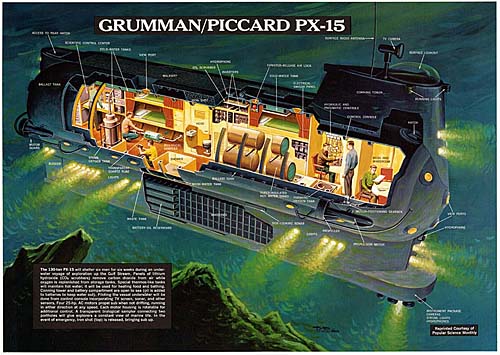

The crew of the Ben Franklin was the first to stay in open ocean in a small boat without beeing afected by waves and seea sickness - this leads to the submerged living bubble concept as first choice for colonizing the open oceans with small scale structures.
The fact that oceanic waves move structures makes comfortable stay in open ocean only feasible for structures and platforms in excess of 100m loa and 40m beam - there is only one way to stabilize a small living space in open ocean to "permanent housing comfort grade" - submerge it like Ben Franklin.
Once you achive housing comfort in the open sea - the need to stay in the marina that ties all small yachts- is gone.
A real worldwide nomadic lifestyle can be created.
 .
.  .
. .
.  .
.  .
.  .
.  .
.  .
.  .
.  .
.  .
.  .
.  .
.  .
.  .
. .
.  .
.  .
. 
Worldwide oceanic traveling - just like a whale - is born as human lifestyle - featuring indedpendence - featuring comfort - as far as it can go. Affordable compared to other solutions (business jets, mega yachts) energy efficient (factor 5 less energy need than a surface yacht) - breaking free of anybodies "jurisdiction", "government", and "travel restrictions".
Oceanic global mobility for worldwide key players - in nature and in business... business centers always can be approached from the sea on our blue planet.

Other than a business jet, or a yacht that need to fit into existing "installations" (runways, marinas etc) The submarine yacht can stay a mile out at sea - still provide comfort (other than a yacht).
This opens a window to have a Vessel of enormous size and draft as big as a building with no size limits at all - tubular concrete structures with a diameter of 24m have already been built and performed for decades maintenance free at sea - as we speak. (TrollA)
 capain nemos motto - predicted that kind of lifestyle ... "moving amidst mobility", "moving within the moving element", or "changing in the changes"
capain nemos motto - predicted that kind of lifestyle ... "moving amidst mobility", "moving within the moving element", or "changing in the changes"Mobility as main factor in the quest for freedom. Jules Verne was a visionary after all...
To get a closer view how Captain Nemo as a aquaculture pro would live and work, see Neil Sims and ocean cage real world testing.
Neil Sims beside presenting a productivity of for a drifting cage that outranks traditional aquaculture.
He also presents the downside of using a surface ship " the oceans incredible capcity to break things".
And he also presents a possible solution: Run the operation completly submerged and "out of reach of the ocean waves" like a "space station".
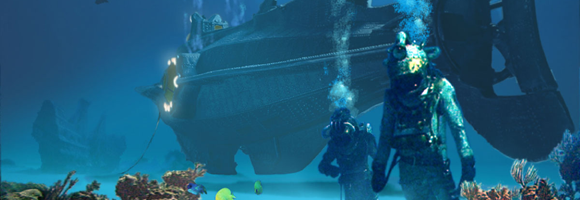
The diver lockout scene from the film - doable and realistic for a submarine yacht. Salvage and Aquaculture as Captain Nemo's dayjob - also a quite realistic setup...
Sealab - a submerged living space bubble (in this case not very mobile) as habitat for divers with a underwater lockout.
Salvage from a submarine. USS Halibut
 .
.  .
. During the cold war USS Halibut was equipped with a FISH that was deployed on a Cable from a streamlined fairing on deck of the submarine - Halibut found and photographed a sunken Soviet submarine in a secrete mission ...
It is obvious that the combination ROV / submarine platform has great advantages compared to surface ship based salvage missions. Submarine deployment is weather independet while surface missions frequently loose 90% of the expediton time to bad weather and cable spooling.
The technology of deploying ROVs from a submarine was later refined by James Cameron on the Titanic. Where he deployed ROVs from small subs like MIR and Alvin.
Depending on the mission the ROV can have sonar, camara, arms, or suction device functions for recovering objects.

/ Contact / Order / Source / Info /
wilfried Ellmer, manager, expat, latin america, colombia, business development, advisor, consultant, portal, german, english, spanish, colombia business development key player network, colombia foreign investment, colombia subsidiary opening, real estate, marine services, tourism, chamber of commerce, business partnering, industrial asset management, CIVETS investment, colombia investment filter service, joint venture, oil, gas, mining, infrastructure, services, outsourcing, barges, ship repair, shipyard services, marine services, development, colombia resident manager, colombia european expat manager, country manager, portal industrial cartagena, internet, seo, search engine marketing, industry, logistics integration, management, projects, headhunting, project setup, executive search, your man in colombia, colombia business development expert, fulltime, parttime, freelance, consulting, available for projects now, logistics, support, setup, WILFRIED ELLMER ASESORIAS Y SERVICIOS S A S, info@tolimared.com
Subscribe to:
Posts (Atom)



